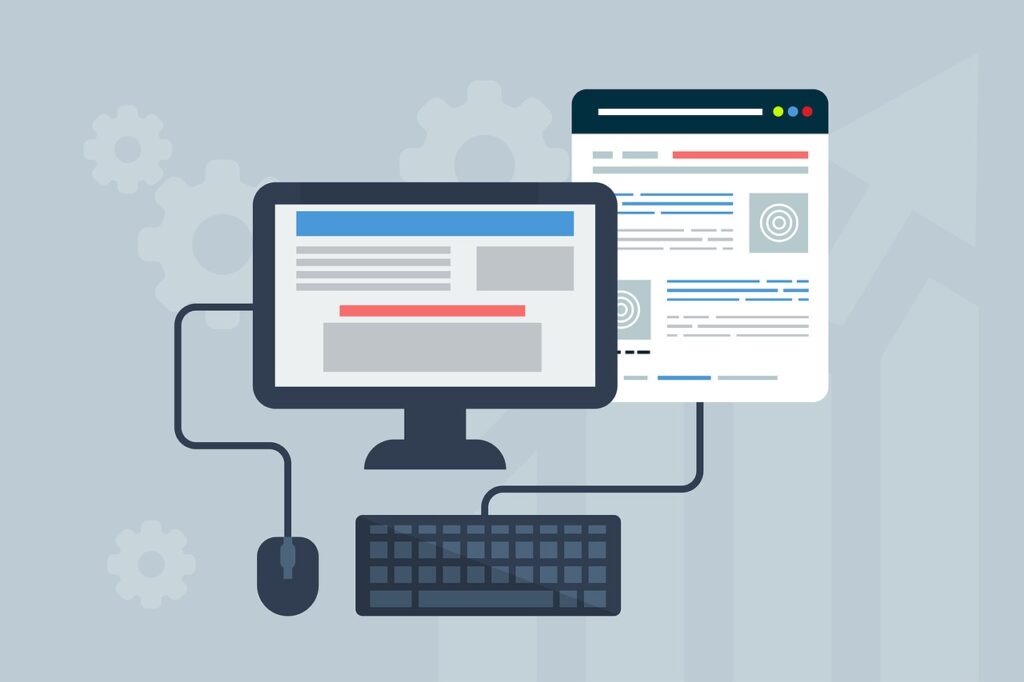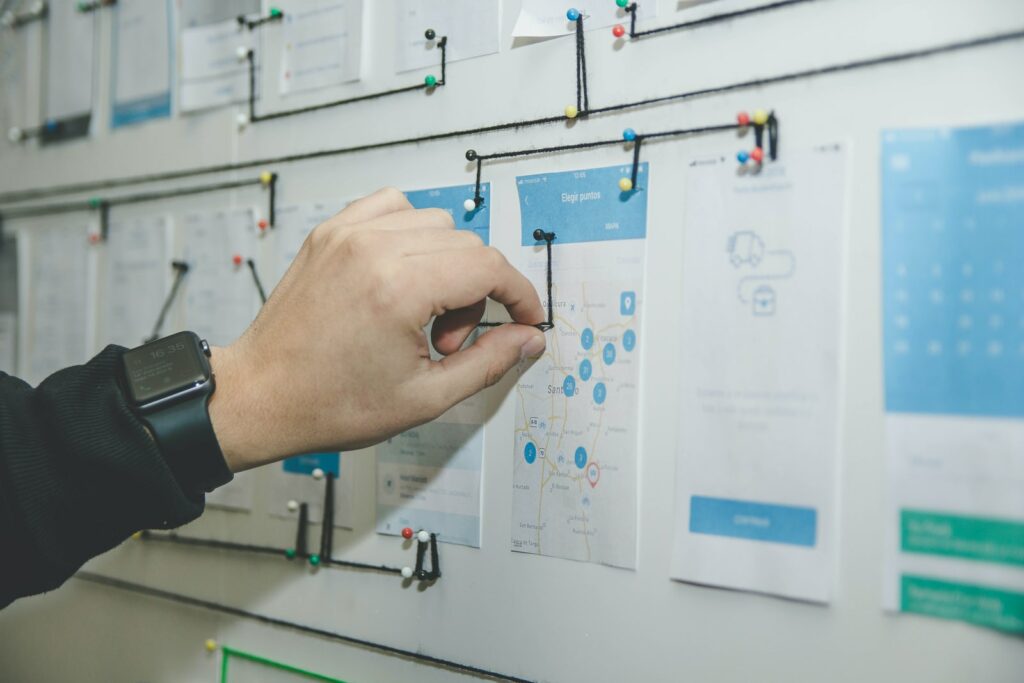A buyer's guide to choosing a web designer for your business

So, you need a website for your business? Great! But, how do you choose which web designer or agency is right for your needs? A quick Google search will reveal heaps of businesses offering web design in Sydney alone! How will you know which one will be the right choice?
Well, the first step is to get clued up on what you should expect from web design and how your website can be leveraged to help deliver on your business goals. That way, you can make an informed decision. I can assure you, that out of the hundreds of websites I’ve built, the most successful projects were the ones where my clients were informed and have understood the role of their website as the key representative of their business (often online as well as off).
Now, I’m not saying you need to know how to code the thing yourself. Website tech can be confusing, and that’s what you have a web designer like me for. However, there are a number of key things you should understand to ensure you get a great end result.
So that you can get that great website you’re looking for, let’s go over the key aspects to consider.
I know you’ll have a lot of questions about web design and it’s my aim to answer them all, and maybe I’ll even answer a few you didn’t know you had yet. Let’s jump in…
Table of Contents

Nailing Your Website Strategy
Before any of the pretty images or clever content hit those web pages, you need to do some strategy work. Without getting the foundations right, you can’t ever hope to create a successful end product. After all, would you build a house without a plan from an architect? Didn’t think so!
Here are some of the strategic considerations you need to make:
Understand Your Ideal Client
Your website should be like a giant blinking neon sign drawing in the kind of clients you love to work with like a bee to honey! It should engage them and show them that you are the business they need in their lives. In order to do that, you need to be clear on exactly who your ideal client is.
Everything on your website should speak to those people you can help the most. Obviously, you can’t make your website speak to your ideal client unless you understand exactly who they are. Knowing this is the first step to a successful web design journey.
Define Your Unique Value Proposition
What makes you stand out from the others in your industry? There will be something uniquely ‘you’ that sets your business apart and draws potential clients in. Once you define what your Unique Value Proposition is, then everything else in your web design package will flow from there.
It’s important to remember that your website is not about you. I know, I know, it’s YOUR website. But, your website is there to serve your audience, so it needs to resonate with them. A great way to ensure that it connects with them is to explore what their needs, wants and fears are.
This will help you to understand the unique reason your clients are seeking you out. Once you define this reason, you can weave it throughout your website — the language you use, how you talk about your services, and even the images you select to embody your brand.
Define Your User Journeys
People have a very short attention span when they are browsing online. If they can’t immediately find the info they need or it becomes too hard to navigate around a website, then they will simply click the back button and move on to the next provider.
Defining clear user journeys will prevent that from happening. Having that definition means your website content and structure can be a reflection of the journey potential leads will take with your business so that their experience on your site is effective and easy.
Leads will have come to your website because they have a problem that needs to be solved and they are hoping that you will be able to solve it. There is usually more than one way that they will find you. So, think about all the different possibilities — will they come from a lead magnet, your social pages, a cold Google search or from a word-of-mouth referral?
Then, consider the journey you want them to take from the moment they discover your business, to hopefully becoming a paying client or customer. Your website should make it easy for them to navigate that entire journey.
Establish Your Key Services
While this might seem like an obvious step, it can sometimes be difficult for business owners to articulate their core services. Ideally, you want to define around three key services so that it is very clear what you do. You also don’t want to overwhelm people when they land on your website.
When defining these services, think about your three main offerings, not all the upsells you offer to repeat clients. Anything that falls outside of your most common services for new clients should be moved to your back pocket for now. They can be woven into your service ladder in new ways. Then, consider how you can categorise your services in a way that will meet the needs of your clients, or solve an immediate problem for them. You might categorise by the specific service, different levels of the same service, or by client type if you are addressing very different audiences with the same product — whatever makes the most sense for your business.
Will You Productize Your Services?
A productized service is a service that has been packaged into a product.
How do you work out if you can productize your current services? Well, most service providers offer 1:1 advice, strategy, mentoring or training. If you break those services down into the areas of change that your clients need to tackle, then some of the components can be packaged up and sold as a product — examples include things like retirement planning or dispute resolution.
A productized service has a specific expected outcome and usually a timeframe too. It can often be delivered on an ongoing basis (perhaps even by subscription) to keep clients engaged with your business and represent consistent value. Offering your services in a productized way can increase your efficiency and reduce your costs, so it’s worth considering.
Check out more info about productizing your services here.
Straight-up advice to help you work smarter, not harder (+ subscriber-only discounts) — direct to your inbox.
How Will You Update Your Website?
You want to make the process of maintaining your website easy. So, if you or someone on your team are going to be making the updates, you’ll want a good CMS (Content Management System) setup.
What’s a CMS?
Put simply, a CMS is the software that helps you to create, manage and modify the content on your website without the need for specialist coding. Common CMS options include WordPress, Shopify, Webflow, Wix and Squarespace.
They all have different benefits, so it’s worth chatting to your web designer about which will suit your needs best. The decision will depend on what you want the website to be able to do, how comfortable you are with technology, and what your long-term business growth goals are.
What Other Technology Can You Use?
We already talked about making your website easy to navigate so it doesn’t become obstructive to your potential clients. But there are plenty of other technology solutions that can be added to make their customer experience even better.
Think things like appointment scheduling tools, email marketing software to nurture leads, email automation for onboarding and structured client communication, document signing tools and simple e-commerce solutions that integrate with your accounting software so you can easily accept online payments.
You can even take it one step further by offering a member-only area to share key resources, client documents or membership material.
The tech used for your business will vary depending on admin hours you are trying to save by taking advantage of these technologies, and if your client journey is well mapped out, how this can easily be scaled up as your business grows.
Website Traffic
You can’t sell a secret! So, if website traffic is important for bringing more clients into your business, then you will need to make sure your site is optimized for SEO (search engine optimisation).
Now, you don’t just want to rank for any old search terms! You want to make sure that your SEO is targeted and in line with the audience you want to attract. It’s also not a one-and-done kind of thing. You will need to have an ongoing SEO plan and process for managing its effectiveness.

Web Design Packages: What Should You Pay?
Web design packages range in price depending on how simple or complex you need the site to be. Obviously, a simple ‘online business card’ style website with no integrations is going to be much less of an initial investment than a more intensive website with multiple services and contact pages.
You can expect the following approximate rates:
- Simple one-page site with no integrations: AUD$1000–$2000
- A small site to include less than 10 pages with simple (but still clever) customisations: between $5000 and $20,000 depending on the number of web pages and level of customisation needed
- Complex, larger site with multiple integrations or complex eCommerce needs: upwards of $20,000 depending on the number of web pages and level of customisation needed.
For more detail on what you can expect to pay, read our accompanying article, How much should web design cost?
A web designer should be able to give you an indication of the cost of their web design packages once they have an understanding of the parameters of your proposed website. For more info on how our services work, then check out our web design packages.

How to Choose a Web Designer
Alright, you are fully informed about the key aspects of web design packages. Now it’s time to choose a web designer! But, how do you know which is the right one for you?
Here are some things to consider:
- Watch out for ‘gurus’! If someone promises you something that sounds too good to be true, it probably is! There is no silver bullet that will make your website an instant success the moment you receive it from your web designer! You want to embrace the process of organic growth to maintain your integrity and credibility.
- Location. Do you want to be able to meet your web designer in person or are you happy to connect with them via video call and email? If you are a Sydney local and are hoping to work with a specialist who understands business where you are, then you’ll want to select a Sydney-based designer. Luckily, technology allows us to do everything remotely, so if you are not based in Sydney, you can still choose to work with us, and we are lucky to be able to flex our web design skills and our business knowledge by working with consultants around the world.
- Experience. Does your web designer have the experience you need? Consider which industries they have worked with and the kind of sites they have previously created. Alignment here is more important than you might think as same-sector experience demonstrates previous experience with clients like yours and a deeper knowledge of your target market. This reduces the learning curve as your designer gets to know your business — and they should get to know you so well that they can speak as though they sit at the desk beside you every day.
- Partnerships. Can your web designer provide you with access to other servcies through established partnerships and a solid referral network? An example of this is the Studio Clvr partnership with Lawpath (among others) to provide our clients with online legal documents, making it simpler and faster to get a new business off the ground.
- Testimonials. Before you select a web designer, check out what other people are saying about working with them. Don’t just look at the testimonials they put on their website, but read Google and Facebook reviews. A simple internet search should turn up any concerning testimonials.
- Vibe. You want to know that you can work well with your web designer. A good designer will take the time to understand you and will help you to make the right decision for your business. A great way to check their vibe is to sign up for their newsletter, that way you can get to know them better and see if they are on the same wavelength as you.

Ready To Nail Your Web Design Strategy?
Ready to get the ball rolling on your new website? Well, the first thing you are going to need is to nail that all-important strategy. Without that, your scope is often vague and I’ve seen so many businesses come undone by other designers who have promised the world but not done the strategy work, so don’t fully understand the tech stack or the integrations required. This lack of preparation gets messy fast during a web build when both the client and the designer are deep in the build phase and only just working out a major piece of the puzzle is missing. Kinda like when you’re building an IKEA chest of drawers and realise at step 11 that you skipped step 2. A lot of the website help work I do is coming to the rescue for people working their way out of this exact dilemma.
Simplify the complex and gain a detailed framework to implement on a new or existing site with our Website Strategy Workshop. The one-off strategy fee is deductible from any of our web design packages or can be taken to your existing web developer for implementation. Meet with one of our expert team to create a strategic plan for your website. Together we’ll outline the architecture, core messaging, systems, and integrations.
